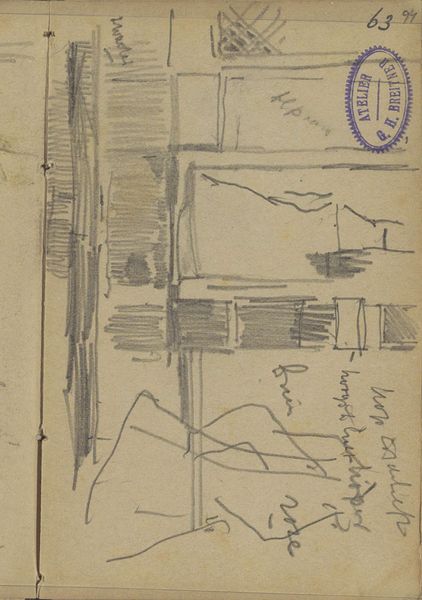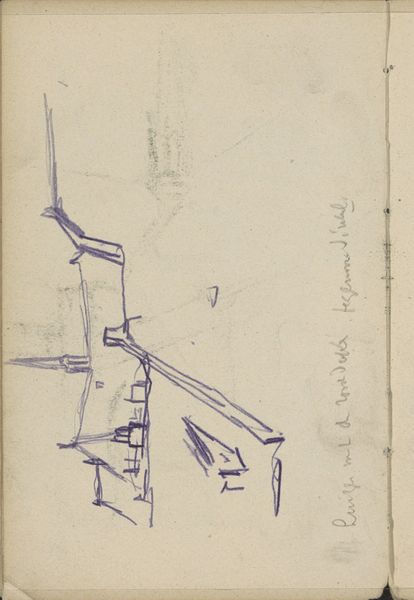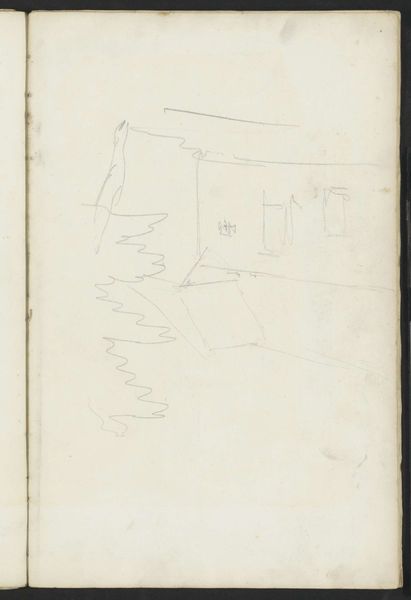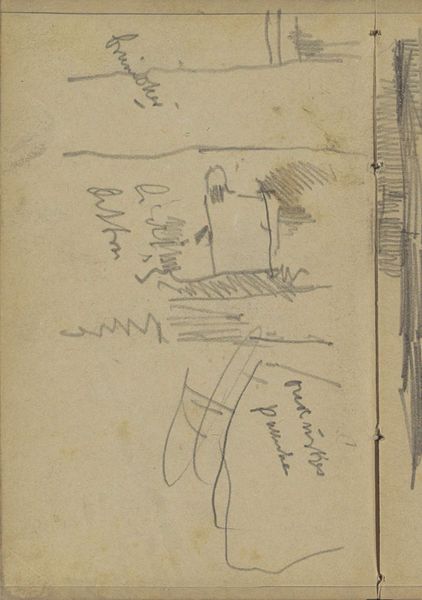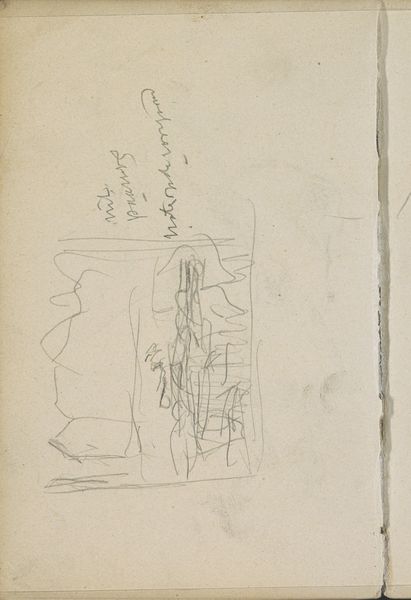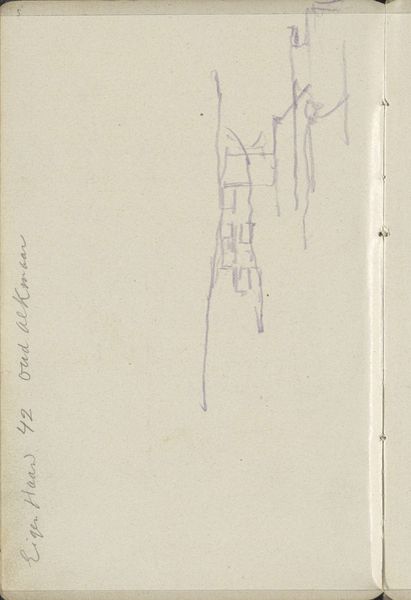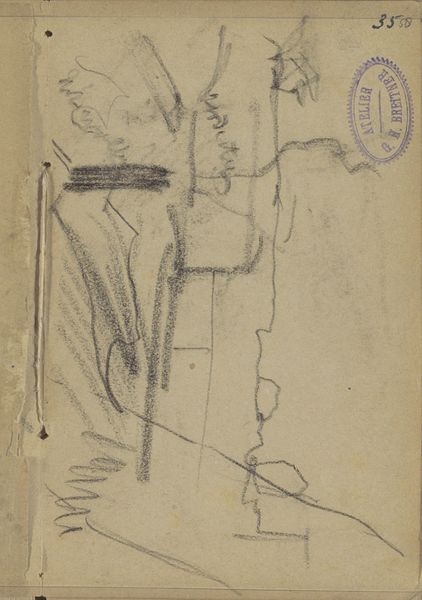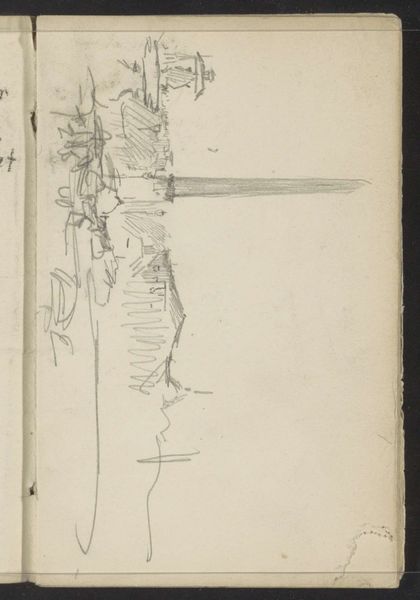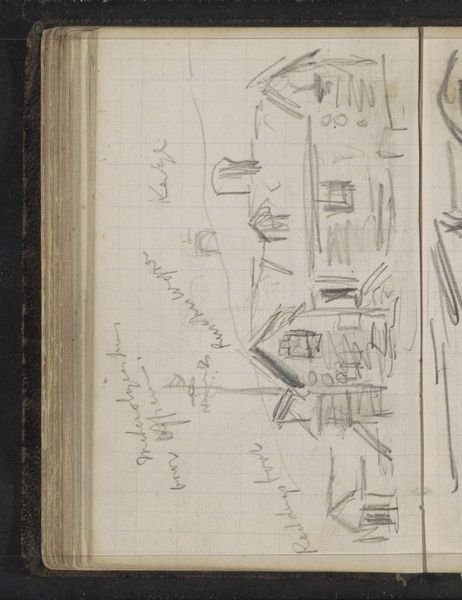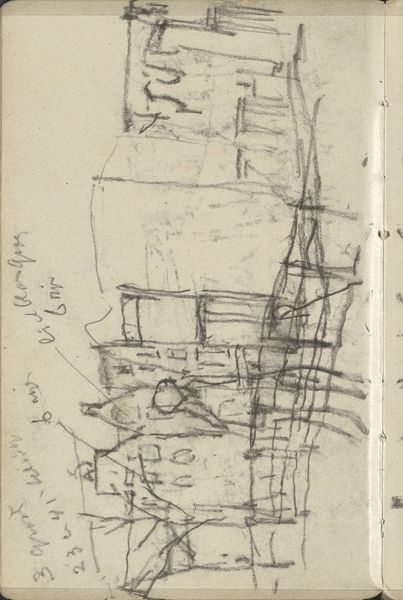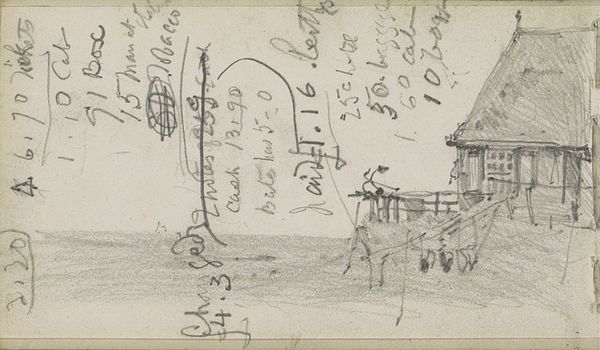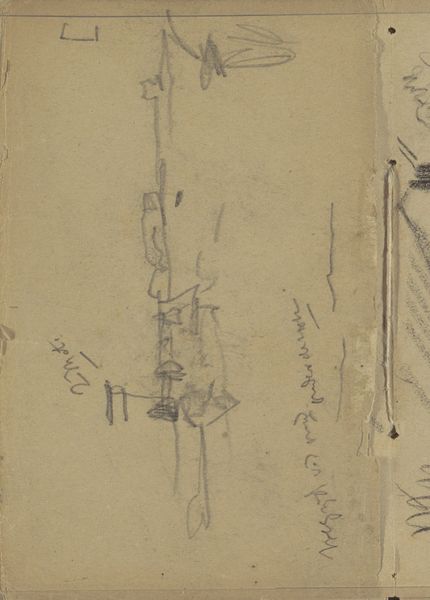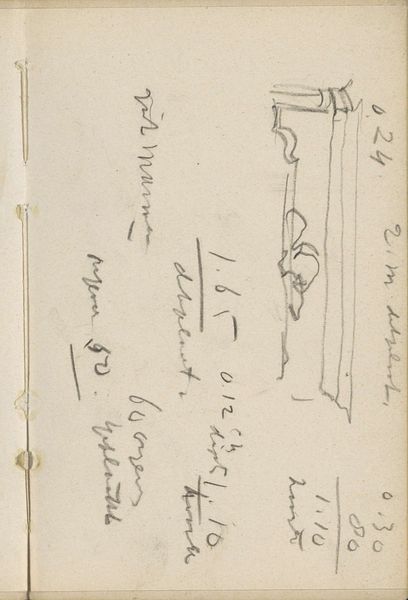
drawing, pencil
#
drawing
#
impressionism
#
landscape
#
pencil
#
watercolor
Copyright: Rijks Museum: Open Domain
Alexander Shilling made this quick pencil and watercolour sketch of a river landscape and a bridge, probably in the Netherlands, in September 1888. The subject matter here is typical of much Dutch landscape painting from the 17th century onwards: flat lowlands, waterways, and bridges, all built through collective effort, are at once a source of national pride and a reminder of constant vulnerability to flooding. The sketch was made at a time when artists were questioning the dominance of academic art institutions, and some were choosing to work outside established studios and galleries. Shilling, who was American, studied in Munich and clearly felt the attraction of the Netherlands as a place to work 'en plein air'. He inscribed a note about watercolour materials and The Hague on the sheet, which suggests he was interested in the technicalities of capturing light and atmosphere. To understand this work better, we might research the art market in the late 19th century, and study artists' manuals and paint catalogues. This is a good example of how social and institutional contexts shape artistic production.
Comments
No comments
Be the first to comment and join the conversation on the ultimate creative platform.
